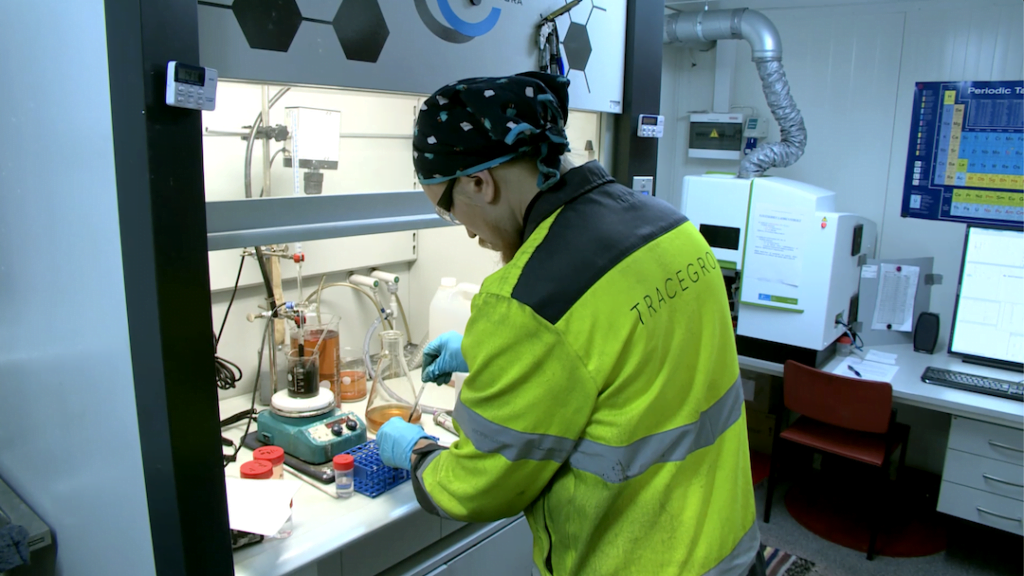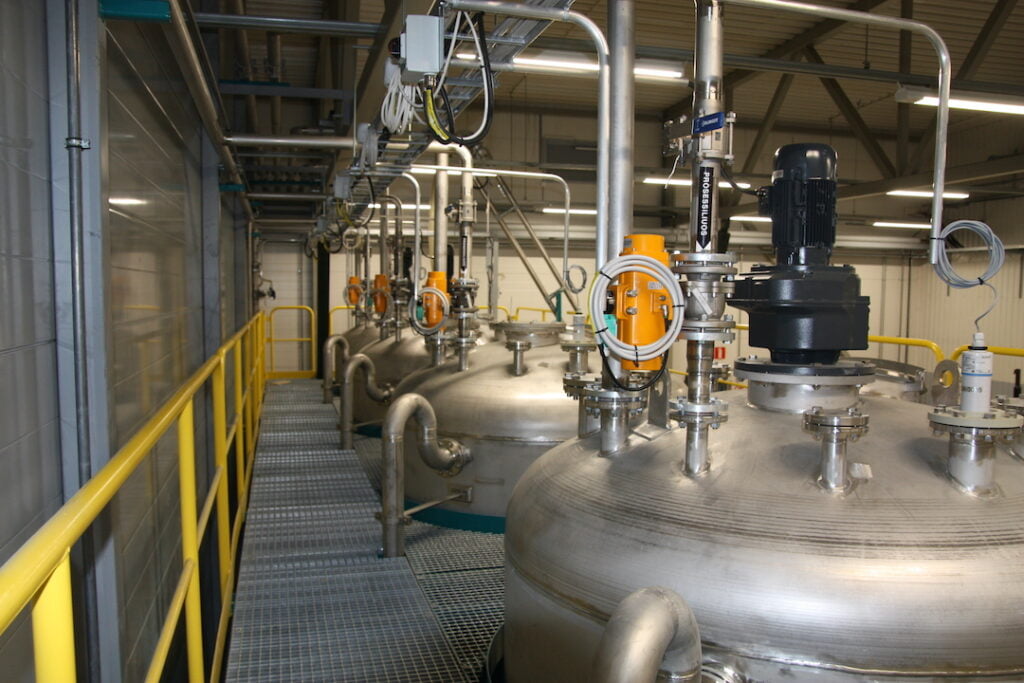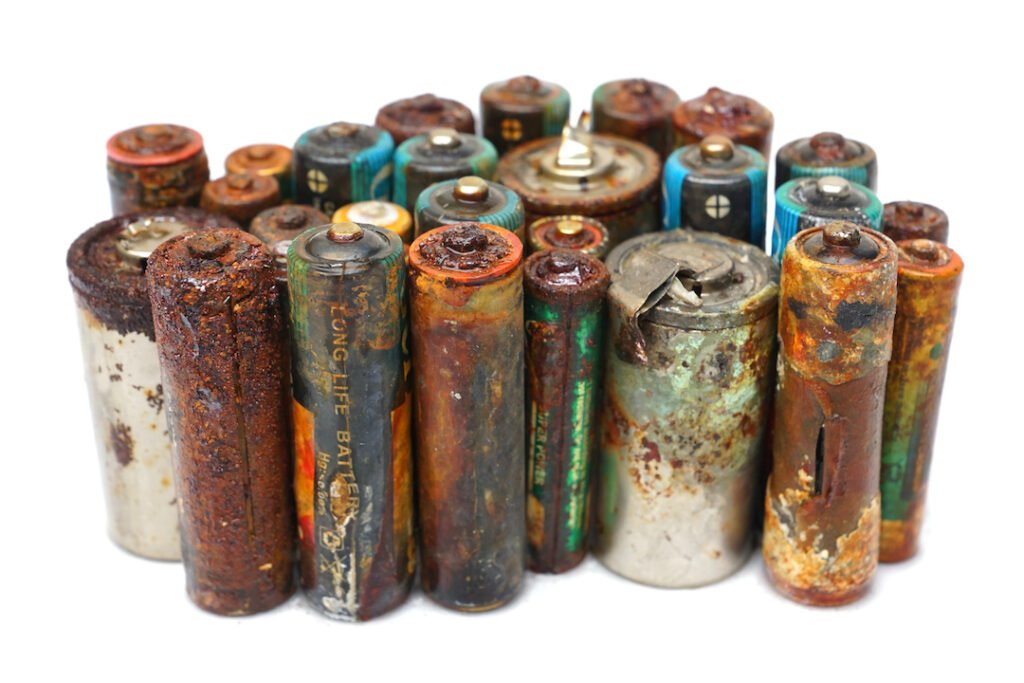When you mention the word battery in the agricultural community, it usually means you’re going to need a set of jumper leads. But with new innovations in recycling technology, batteries can now mean recycled liquid fertiliser.
Using clean technology processing methods first adapted in Finland by a company called Tracegrow, ReNutrients are putting refurbished micronutrients back into soils through the form of a recycled liquid fertiliser.
ReNutrients – based on the Gold Coast – are using recycled metals from alkaline batteries in their recycled liquid fertiliser product. It’s so clean, rich and micronutrient it has been certified organic in Australia. The same refining technologies used to create the fertiliser called ZM-Grow can be used to create new batteries as well, creating a circular economy.
Alkaline batteries contain valuable metals which construct the chemistry of both the external and internal battery. It is estimated that around 80 per cent of an alkaline battery can be recycled into a fertiliser form. Many of the typical metals can be repurposed through correct processes – aluminium, manganese, copper, magnesium, and iron. Two essential micronutrients for plant growth and the survival of humans and animals are Zinc (Zn) and Manganese (Mn). But it doesn’t stop there, these two elements are also essential for producing electric vehicle batteries and iron and steel products as well.
Over 50 per cent of batteries in Finland are recycled whereas Australia currently recycles less than 10 per cent correctly. When unprocessed batteries are left to decompose in landfill, they leech toxic waste chemicals into soils and water systems. As Zinc production rises globally, more is making its way throughout our ecosystems. Wastewater from industrial plants drastically pollute waterways with large quantities of Zinc. Some species of fish can accumulate Zinc in their bodies in a process of biomagnification.
“Over 420 million batteries make it into landfill each year. By harvesting the Zinc and Manganese from used batteries, we are repurposing valuable, essential metals for use on agricultural crops that would have otherwise gone to waste,” says Brett Smut, Managing Director of ReNutrients. “In Australia, we have more than enough supply to feed the demands of our liquid fertiliser through a circular economy.”
First in, first served
ReNutrients are the first in the Australian market to supply ZM-Grow – the premium zinc and manganese foliar fertiliser. They have obtained exclusive first rights of refusal from Tracegrow to distribute the product through Australia and New Zealand. Although the company is only importing the foliar fertiliser product from Scandinavia at the moment, its aim is to become the lead supplier of cleantech farming products nationwide.
“It’s always difficult to be first in the market – you have to have a lot of breakthroughs,” says Brett. “But the response has been overwhelming, and we are looking to secure land to build our first factory on the Fraser Coast.”
Brett also has his sights on recycling other items such as steel and even ash from coal mines at the factory.
Brett acknowledges that natural resources diminish in supply over time, so recycling is crucial for the future of our planet. In order to sustain our agricultural demands, we need to extract and purify elements that can be used again.

Running or recharging – recycled liquid fertiliser
According to research and market reports, the Australian liquid fertiliser market value reached USD 488.7 million in 2016 By the end of 2024, this figure could rise to USD 645.8 million.
The age of Australian soils and a constant demand for high yielding crops means our soils are under constant pressure. Brett thinks the demand in market for good quality fertilisers is only going to get bigger. In order to produce a nourished crop for both humans and livestock, implementing a Zinc and Manganese-based micronutrient product into the soils is essential.
“For Australia, there is a pent-up demand for Zinc and Manganese. Farmers and grazers own 61 per cent of our land and back-to-back farming of high-yielding crops has, over time, pulled valuable nutrients out of Australian soils. So, there is a high demand for Zinc and Manganese to fertilise fields,” Brett says.
The logistics for collecting batteries to recycle for the production of the liquid fertiliser is currently being developed with the Battery Stewardship Council. Its aim is to work with specialised collection companies who work with supermarkets and retailers to further develop the reach and awareness of the program.
Brett says that there is interest from local and federal governments in supporting cleantech technology. The way he sees it, is that battery waste treatment in Australia needs to be revolutionised and replaced with a circular economy model that benefits everyone. It’s a path towards reducing pollution, increasing jobs, increasing agricultural yield and quality, and reducing reliance on mined materials.

Manganese – Mn
Appearing naturally in the earth as a pinkish-grey metal, Manganese is extremely brittle. It’s reactive to water, often rusting like iron. More than 25 million tonnes are mined every year globally. Australia is one of the main areas to mine the mineral, alongside parts of Africa and Eastern Europe. Optimal absorption lies in a fine spectrum between too much and not enough. Manganese is vital for metabolic functions. Both high and low concentration levels of Magnesium present in plants, humans and animals can be toxic.

Zinc – Zn
Appearing as a bright blue-white metal, Zinc is brittle and crystalline. It occurs naturally in air, water and soil. It is essential for human, plant and animal life functioning in bodies through biochemical reactions. Too much can also cause sickness such as metal fever – flu-like symptoms, vomiting, skin irritation among other things. Australia is one of the main areas where Zinc is mined as well as South America, Canada, USA and Russia, where combined we harvest more than 7 million tonnes per year.
If you enjoyed this story on developments in recycled liquid fertiliser, read our other stories on innovations in agriculture. As well, if you’d like to read more from our Journalist Darcy Watt, click here for travel-inspired content on Truly Aus.

